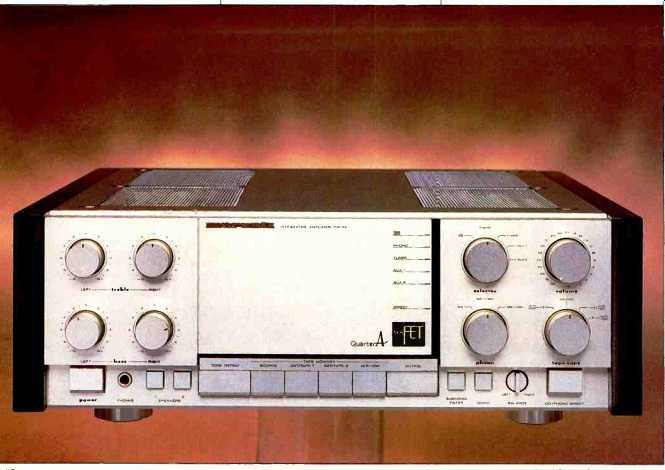
Manufacturer's Specifications:
Power Output: 140 watts per channel, 8 ohms, 20 Hz to 20 kHz; 200 watts per channel, 4 ohms, 20 Hz to 20 kHz.
Rated TIM: 0.02% into 8 ohms, 0.03% into 4 ohms.
Rated SMPTE IM: 0.006% into 8 ohms, 0.005% into 4 ohms.
INF Dynamic Power: 180 watts into 8 ohms, 300 watts into 4 ohms.
Damping Factor: 200.
Slew Rate: Main input, 70 V/uS.
Frequency Response: Main input, 10 Hz to 200 kHz, ± 1 dB; MM phono input, RIAA ±0.2 dB; high-level inputs, 10 Hz to 70 kHz.
Input Sensitivity: MM phono, 2.5 mV; high MC, 350 uV; low MC, 125 uV; high level, 150 mV.
Phono Overload: MM, 200 mV; high MC, 28 mV; low MC, 10 mV.
A-Weighted S/N: Main, 97 dB (re: 1 watt); MM phono, 83 dB; MC phono, 83 dB; high level, 98 dB.
Voltage Output Levels: Tape out (re: 7.75 mV, 1 kHz in at MM phono), 465 mV; preamplifier out (re: 150 mV, 1 kHz in at AUX). 1.5 V.
Power Requirements: 120 V a.c., 60 Hz, 490 watts.
Dimensions: 18 1/4 in. W x 5 3/4 in. H x 16 1/8 in. D (46.5 cm x 14.6 cm x 41 cm).
Weight: 51 lbs. (23 kg).
Price: $2,900.
Company Address: 20525 Nordhoff St., Chatsworth, Cal. 91311.
One quick look at the Marantz PM-94 integrated amplifier and I am reminded of the kinds of components that first propelled Saul Marantz and his company to the pinnacle of the high-end audio realm in the 1950s and 1960s. The sheer elegance of the gold front panel (it's available in black, if you insist), the solid look and feel, and, yes, the high price of this integrated amp all bring back memories of such Marantz classics as the Model 10 B tuner. Of course, Saul Marantz hasn't been involved with the company in many years, but with products such as this superb-sounding amplifier, it's clear that present management is attempting to recapture the company's original image.
The PM-94 incorporates four separate power supplies. Each channel has a separate supply for the low-level voltage-amplifying circuitry and another for the MOS-FET out put stage. Separate windings on a toroidal power transformer ensure adequate current capacity when driving low-impedance loads and also help to reduce hum and inter-channel crosstalk.
The PM-94 features circuitry which Marantz calls "Quarter A" operation. This term denotes that the amplifier operates in pure Class A until power output reaches approximately a quarter of its rated value. The output stage changes to Class-AB operation only at high signal levels. This would explain the heavy weight of the PM-94 (51 pounds) as well as the extensive open grille work on its top surface. Class-A operation means high idling current, even in the absence of signal, which, in turn, means an amplifier that will run warm and therefore require adequate ventilation. Since average power levels in music are at least 10 dB (and often more) below short-term peaks, the PM-94 operates in Class A nearly all of the time.
Examination of the inside of this amplifier revealed the use of extremely high-grade components. The chassis is copper plated, and, according to Marantz, oxygen-free copper wiring is used for all critical signal-handling connections. All connectors are gold plated for positive, corrosion-free con tact. Another reminder of earlier Marantz preamps and amps is the use of separate bass and treble controls for each channel. And, as if to satisfy all factions, Marantz designed this amp so that CD and phono inputs can be routed directly to amplifying circuits, bypassing the tape-dubbing and tone-control circuitry. This feature should please those who eschew tone controls altogether. For other program sources, the tone-control circuitry can also be selectively defeated.
The phono section offers three separate input levels (MM and low- and high-level MC), and a high-quality transformer is employed for the moving-coil cartridge inputs. A separate pair of preamp output jacks permits you to connect a second amp for a biamplified system. The sample that I tested had a rose-gold colored front panel and hand-rubbed rosewood side panels. Should you prefer the satin-black front-panel finish, that version comes with oak side panels.
Control Layout
The symmetrical layout of the PM-94's front panel includes four gold-colored rotary knobs at the left, for independent left- and right-channel bass and treble control, and four matching knobs at the right. These four knobs handle master volume, selection of the phono input (MM and two MC gain settings), selection of major signal inputs (CD, phono, tuner, AUX 1, or AUX 2), and tape-copying modes.
Below the four rotary knobs at the left end of the panel are a "Power" on/off button, a stereo headphone jack, and two speaker-selector pushbuttons. Below the four rotary controls at the right are subsonic filter on/off and stereo/mono pushbuttons, a small rotary balance control, and a "CD/ Phono Direct" button which, when pressed, minimizes the signal path from input to main amplifier stages.
The center section of the panel is elegantly bare, except for a vertical bank of tiny indicator lights that show which program source has been selected, whether the "CD/Phono Direct" button has been pressed, and whether the amp is in one of its several tape-monitor modes. Six additional non-protruding square pushbuttons, along the bottom of the panel's center section, include four tape-monitor switches (for one of two tape decks or DAT recorders, the audio loop of a Hi-Fi VCR, and to select "Source"). The remaining two switches are "Tone Defeat" and "Muting." The rear panel has four pairs of color-coded speaker terminals of the type that securely lock the stripped ends of speaker cables in place. There are three a.c. receptacles for the power cords of associated components (two switched, one unswitched), the usual array of gold-plated phono and high-level inputs, the preamp out and main amp in jacks, three sets of tape-monitor in and out jacks, and a chassis ground terminal for use with turntables. A fuse-holder completes the rear panel.
As mentioned earlier, large open grille areas atop the cabinet allow for dissipation of the increased heat associated with Class-A operation, and the owner's manual warns not to obstruct these openings or those beneath the cabinet.
You can expect the grilles to get quite warm when the amp is operating, regardless of volume-control setting or whether a signal is even being applied to one of the inputs.
Measurements
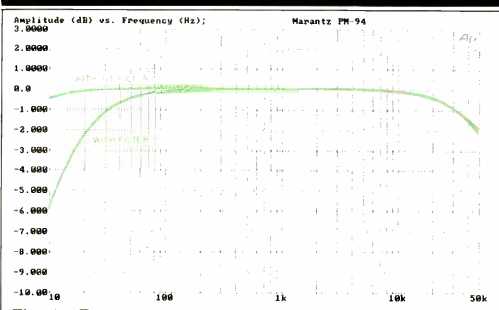
Fig. 1-Frequency response, without and with subsonic filter activated.
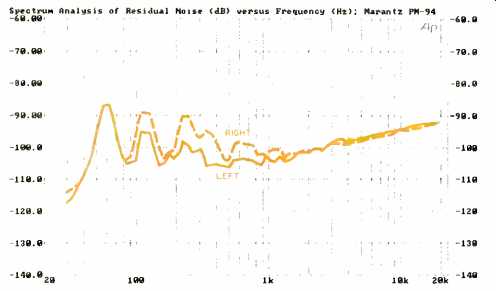
Fig. 2-Spectrum analysis of residual noise, re: 1 watt output.
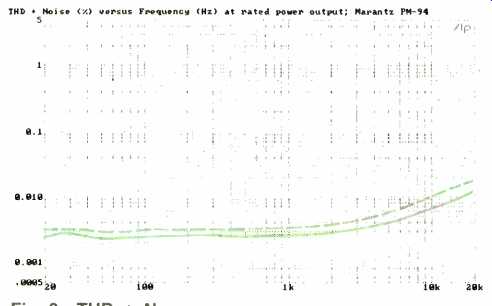
Fig. 3-THD + N vs. frequency for 8-ohm load (solid curve) and 4-ohm load (dashed
curve), at rated outputs (140 watts per channel for 8 ohms, 200 watts per channel
for 4 ohms).
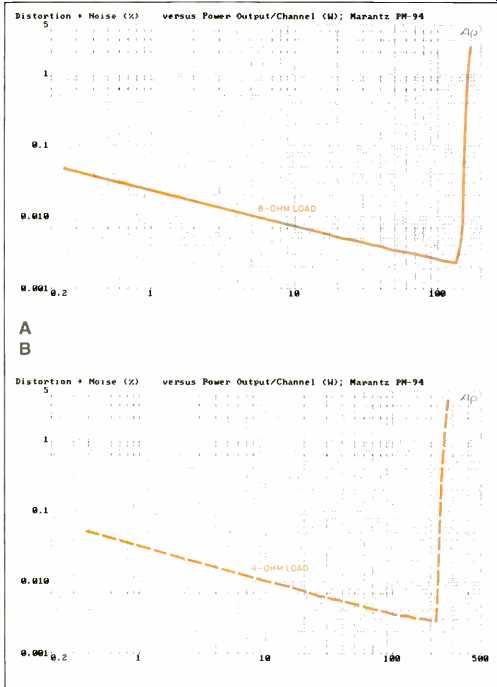
Fig. 4-THD + N vs. power output at 1 kHz, for 8-ohm load (A) and 4-ohm load
(B).
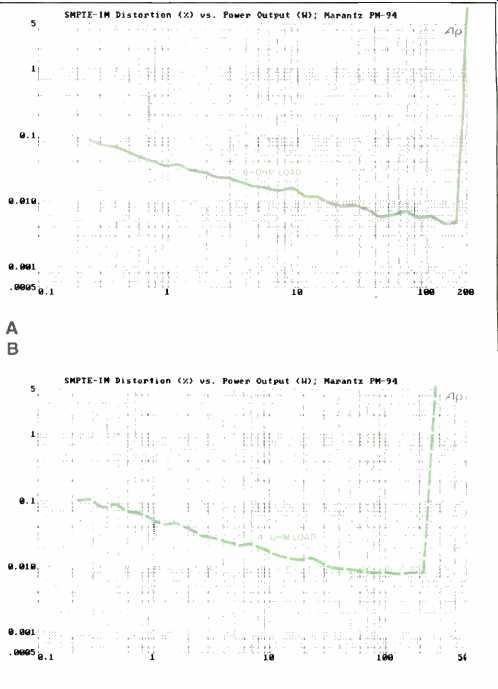
Fig. 5-SMPTE-IM distortion vs. power output, for 8-ohm load (A) and 4-ohm
load (B).
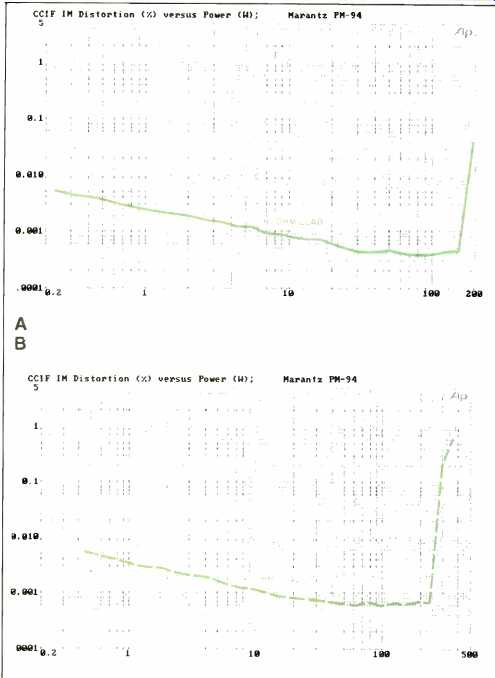
Fig. 6-CCIF-IM distortion vs. power output, for 8-ohm load (A) and 4-ohm load
(B).
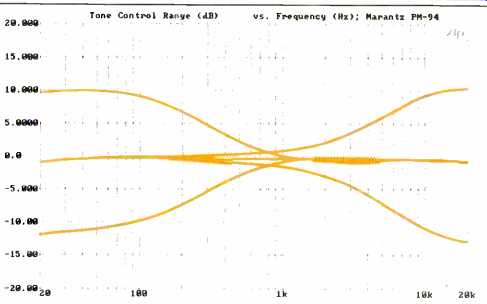
Fig. 7-Bass and treble tone-control range.
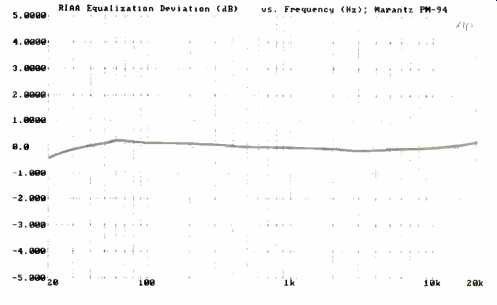
Fig. 8--Deviation from RIAA equalization.
Figure 1 is a plot of the response of the PM-94, with signals applied to the CD (high-level) inputs, over the range from 10 Hz to 50 kHz. The upper curve, which was made without the subsonic filter activated, shows response down 0.5 dB at 10 Hz and 20 kHz and down 2 dB at 50 kHz. The second curve, exhibiting low-frequency roll-off, was made with the subsonic filter activated. The -3 dB point for this filter occurred at 16 Hz, and the slope of this filter is a gentle 6 dB/octave.
Marantz uses a bit of "specsmanship" in specifying the PM-94's signal-to-noise ratios. For example, they quote the A-weighted S/N via the "main" input with reference to 1 watt (as called for in the EIA Amplifier Measurement Standard) and come up with an impressive result of 97 dB. I confirmed this figure on the sample I tested. However, for the S/N spec of the high-level inputs, Marantz references rated output; they don't say so, but it's fairly obvious from the claim of 98 dB. It should also be obvious to anyone acquainted with amplifiers that the S/N ratio via the high-level inputs (with all the extra stages and loops the signal will go through) cannot possibly be better than the S/N of the main amplifier section, which comes several stages after the high-level inputs! I preferred to stick with the EIA Standard method, applying 0.5 V to the high-level inputs and adjusting the master volume control for 1 watt output. Under such circumstances, S/N measured 86.5 dB for the left channel and 85 dB for the right. These are certainly very good results by anyone's standards.
The S/N ratio for the MM phono input was 84 dB referred to 1 watt output and with a 5-mV input applied-also a superb result. For the MC phono input, the reference is still 1 watt output but the input is reduced to 500 µV (0.5 mV).
Under these circumstances, S/N was 69 dB for high MC and 61 dB for low MC. Figure 2 is a spectrum-analysis sweep of residual noise produced by this amplifier with the selector switch set to one of the high-level inputs. The reference level is 1 watt, and it is clear that major noise contributions, as low as they are, derive from the power-supply frequency and its harmonics (60, 120, 240 Hz, etc.).
The input designations assigned by Marantz are "MC (High)" for MC cartridges with relatively high output and "MC (Low)" for those that deliver lower output voltages.
Since the higher level input has the lower gain, and vice versa, perhaps Marantz should have used labels such as "MC (High Level)" to prevent confusion with high-gain in puts. It took about 30 µV to produce 1 watt of output via the high MC input and about 11 µV to produce 1 watt via the low MC input. MM phono sensitivity was 0.22 mV for 1 watt output. Phono overload was much better than claimed by Marantz, measuring 230 mV for the MM input, 173 mV for the high MC input, and 83 mV for the low MC input. High level input sensitivity was 13 mV for 1 watt output.
At rated output (140 watts per channel into 8 ohms), mid-frequency THD + N was only 0.0026%. Even at 20 kHz, distortion measured only 0.012%. Figure 3 shows how THD + N varied with frequency, for a constant 140 watts output per channel into 8 ohms, both channels driven, and for the 4-ohm load condition, with output maintained at a constant 200 watts per channel. At 1 kHz, THD + N for 4-ohm loads was 0.0032%; at 20 kHz, it rose slightly to 0.016%.
Figure 4A shows how THD + N varies for a 1-kHz test signal as power output is increased from about 0.2 watt to beyond rated power, using an 8-ohm load. Rated THD of 0.02% was reached when the amplifier delivered 149 watts per channel, with both channels driven. For Fig. 4B, I altered the load to 4 ohms, and the amplifier delivered 240 watts per channel before reaching its rated THD of 0.03%. (The high THD + N readings at low power levels are principally due to noise rather than distortion.)
Plots of SMPTE-IM distortion and CCIF-IM (twin-tone) distortion are shown for 8and 4-ohm loads in Figs. 5A and 5B and Figs. 6A and 6B, respectively. In all cases, power output exceeded published ratings by fairly wide margins before a steep rise in distortion, caused by clipping, was noted.
Marantz elected to publish a now-obsolete-and, according to FTC rules, proscribed-power rating called IHF dynamic power. Marantz claims 300 watts per channel at 4 ohms and 180 watts per channel at 8 ohms. What they should have published-and what is a proper specification, even by FTC standards-is IHF (or EIA) dynamic headroom, in dB. The idea here is that the FTC doesn't want potential buyers to be confused by multiple power ratings. ("Is this a 200-watt/channel amp or a 300-watt/channel amp?") I measured dynamic headroom of the PM-94 using a special tone-burst signal consisting of 20 alternations of a high-amplitude 1-kHz signal, followed by 480 alternations of the same signal reduced in amplitude by 20 dB. I came up with a figure of 1.1 dB for the 8-ohm load and 1.7 dB for the 4-ohm load. If I were to translate these dB values to equivalent power levels, I would obtain almost exactly the 180- and 300-watt figures published by Marantz.
Using the multiple sweep modes of my Audio Precision System One test equipment, I superimposed a series of five frequency response sweeps in Fig. 7, to show the maximum cut and boost range of the PM-94's bass and treble controls. In the boost positions, note that both the bass and treble circuits have a shelving characteristic to prevent the circuits from continuing to deliver ever higher levels with decreasing (or increasing) frequencies.
Figure 8 is a plot of the deviation from precise RIAA equalization exhibited by the phono preamplifier/equalizer circuitry of the amplifier. This response curve was obtained by inserting the inverse RIAA curve in the signal path from the Audio Precision's generator section and then performing a frequency sweep from 20 Hz to 20 kHz. I then measured the amplitude at the output of the PM-94, with tone controls bypassed. Deviation from perfect RIAA equalization was less than 0.2 dB at 20 kHz and only -0.1 dB at 30 Hz (the lower limit of the "official" RIAA curve).
Use and Listening Tests
lye had the Marantz PM-94 mounted in my system for the better part of a week now, and during all that time, while playing everything from some of my older LPs to my latest CD and DAT acquisitions, the amplifier has been able to drive my reference Infinity RS 9 Kappa speakers with no difficulty. I can report that the "CD/Phono Direct" switch is no mere gimmick. Although I detected little or no difference between the direct mode and the regular mode (with tone controls defeated) when playing LPs and cassettes via the CD input, there seemed to be a definite firming up of the image when I listened to some of my more recently acquired CDs. Vocals were more solidly positioned between my speakers, and it seemed somewhat easier to pinpoint and concentrate on individual musical instruments of orchestral selections.
If you want to put an amplifier such as this through its paces, I recommend playing straight through Telarc's new CD sampler, Sampler Five Plus (CD-80005). It's got every thing on it from Vivaldi to Liza Minnelli. In addition to 65 or so minutes of music of every genre and of widely differing dynamic ranges, the "Plus" in the title refers to a few minutes of sound effects such as pistol and rifle shots, cannons, and aerial explosions-all taken from sound-effects tracks of earlier Telarc LPs and CDs. The Marantz PM 94 handled the sound effects with as much aplomb as it did the musical selections, though I was careful to start my effects listening at low level settings-as cautioned by Telarc in the notes accompanying the sampler.
The clarity of sound reproduced by the PM-94, particularly during quieter passages, seemed to confirm at least some of the advantages of Class-A operation. I must con fess, too, that when sudden loud passages were reproduced, I was not conscious of any sort of artifacts caused by the amplifier's switching between Class A and Class AB.
Whether this is because such switching transients would be masked by the levels involved or because Marantz has figured out a way to have the switching occur in a totally seamless manner is academic, so long as the system doesn't intrude on musical integrity and enjoyment.
I am told that vintage Marantz products built in the early years of the company's history, if in working condition, can bring a high price here and a very high one abroad. If that's the case, then the rather high price of this Marantz "limited production" amplifier may well be thought of as an investment for the future. Meanwhile, as you wait for its value to appreciate, you can enjoy the PM-94 as a central component in your present-day audio system.
-Leonard Feldman
(adapted from Audio magazine, Dec. 1988)
Also see:
Marantz PMD430 Portable Cassette Deck (Jul. 1986)
Marantz 1120 Integrated Amplifier (May. 1973)
Marantz Model 7 Preamp & Model 9 Mono Amp (June 1997)
Marantz Model 2500 Stereo FM/AM Receiver (Feb. 1978)
= = = =